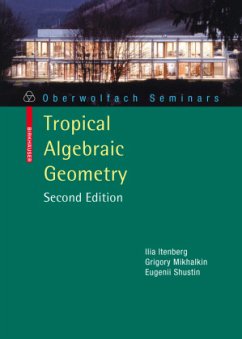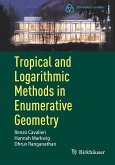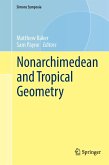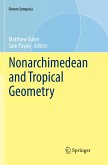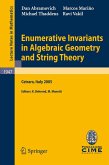This book is based on the lectures given at the Oberwolfach Seminar on Tropical Algebraic Geometry in October 2004. Tropical Geometry ?rst appeared as a subject of its own in 2002, while its roots can be traced back at least to Bergman's work [1] on logarithmic limit sets. Tropical Geometry is now a rapidly developing area of mathematics. It is int- twined with algebraic and symplectic geometry, geometric combinatorics, in- grablesystems, and statistical physics. Tropical Geometry can be viewed as a sort of algebraic geometry with the underlying algebra based on the so-called tropical numbers. The tropicalnumbers (the term "tropical" comesfrom computer science and commemorates Brazil, in particular a contribution of the Brazilian school to the language recognition problem) are the real numbers enhanced with negative in?nity and equipped with two arithmetic operations called tropical addition and tropical multiplication. The tropical addition is the operation of taking the m- imum. The tropical multiplication is the conventional addition. These operations are commutative, associative and satisfy the distribution law. It turns out that such tropical algebra describes some meaningful geometric objects, namely, the Tropical Varieties. From the topological point of view the tropical varieties are piecewise-linearpolyhedral complexes equipped with a particular geometric str- ture coming from tropical algebra. From the point of view of complex geometry this geometric structure is the worst possible degeneration of complex structure on a manifold.
Bitte wählen Sie Ihr Anliegen aus.
Rechnungen
Retourenschein anfordern
Bestellstatus
Storno

